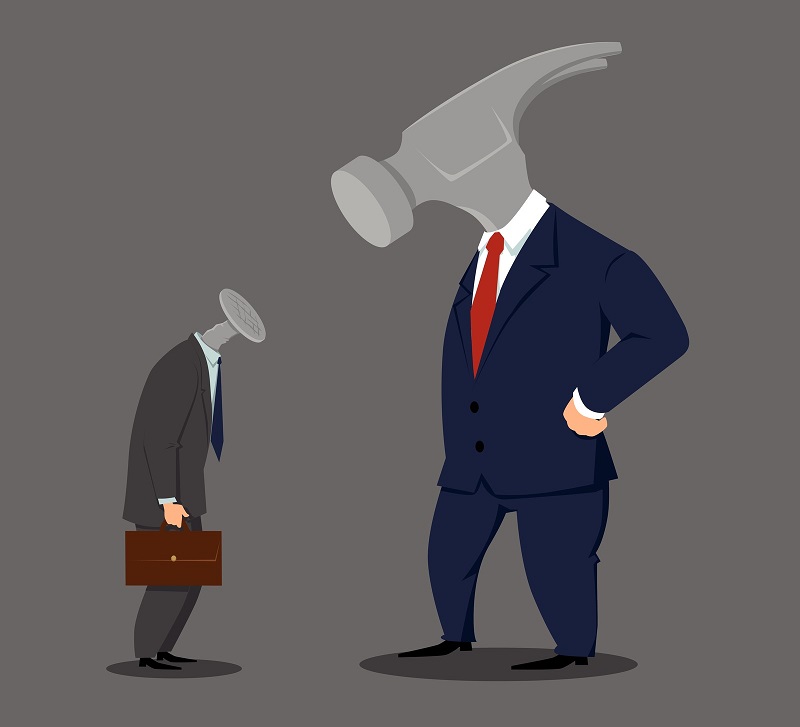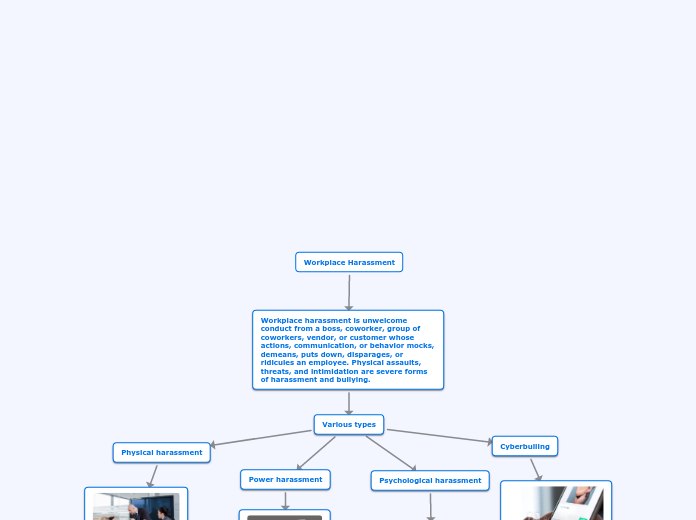Workplace Harassment
Workplace harassment is unwelcome conduct from a boss, coworker, group of coworkers, vendor, or customer whose actions, communication, or behavior mocks, demeans, puts down, disparages, or ridicules an employee. Physical assaults, threats, and intimidation are severe forms of harassment and bullying.
Various types
Power harassment

power harassment is a common form of workplace harassment that's characterized by a power disparity between the harasser and the harassed. the harasser their power by bullying a victim who is lower on the office hierarchy.
Examples:
-excessive demands that are impossible to meet
-demeaning demands far below the employee's capability
Psychological harassment

psychological harassment has a negative impact on a person's psychological well-being. victims of psychological harassment often feel put down and belittled on a personal level, a professional level or both.
Examples:
-isolating or denying the victim's presence
-discrediting or spreading rumors about the victim
Cyberbulling

employers are embracing new technology in order to appeal to younger employees and reap the benefits of a digitally connected world.
Examples:
-share humiliating things about the victim by mass email or mass chat
-spread lies or gossip about the victim on social media
Physical harassment

physical harassment, also often called workplace violence, refers to a type of workplace harassment that involves physical attacks or threats. in extreme cases, physical harassment may be classified as assault.
Examples:
-directed threats on intent to inflict harm
- physical attacks (hitting, shoving, kicking)
